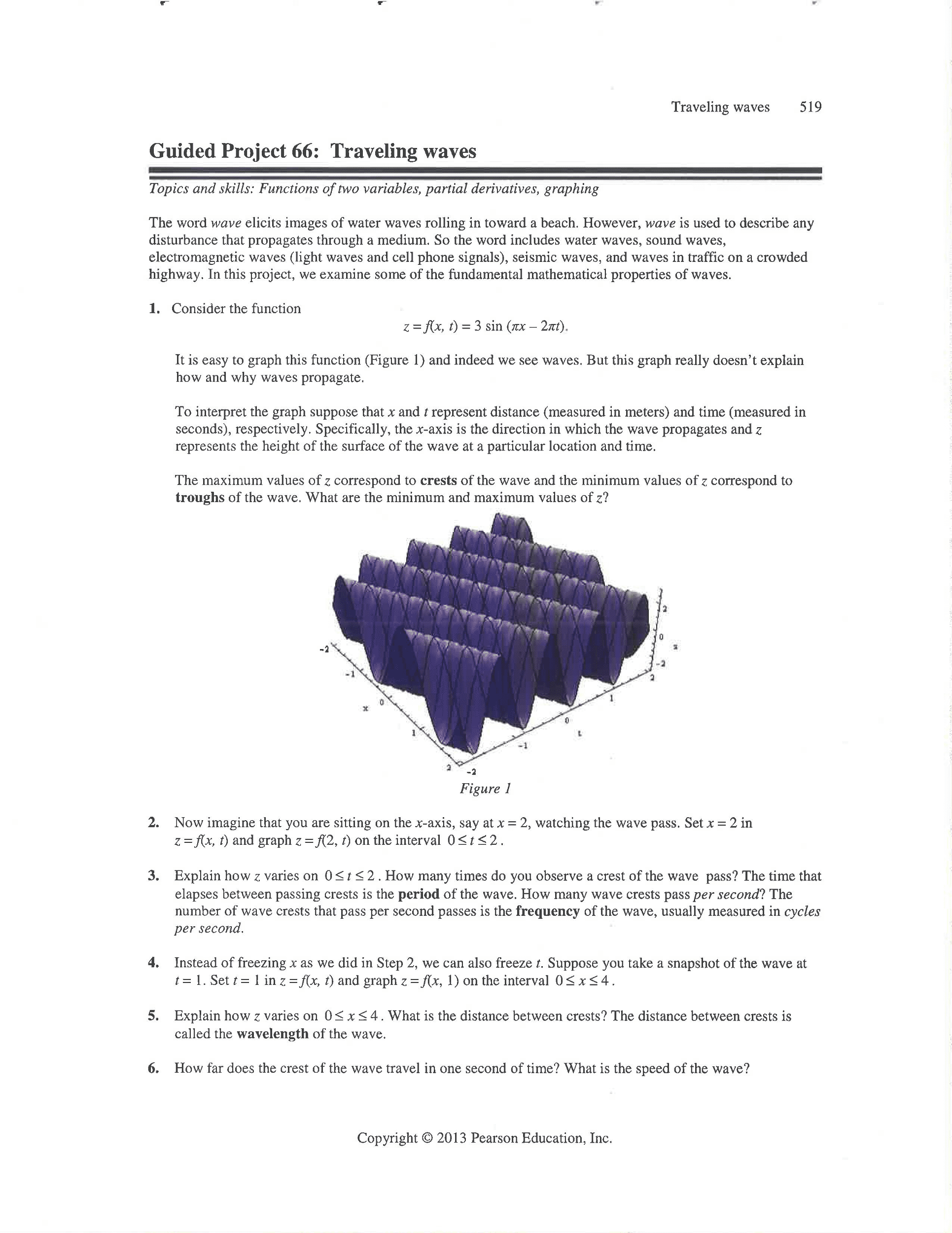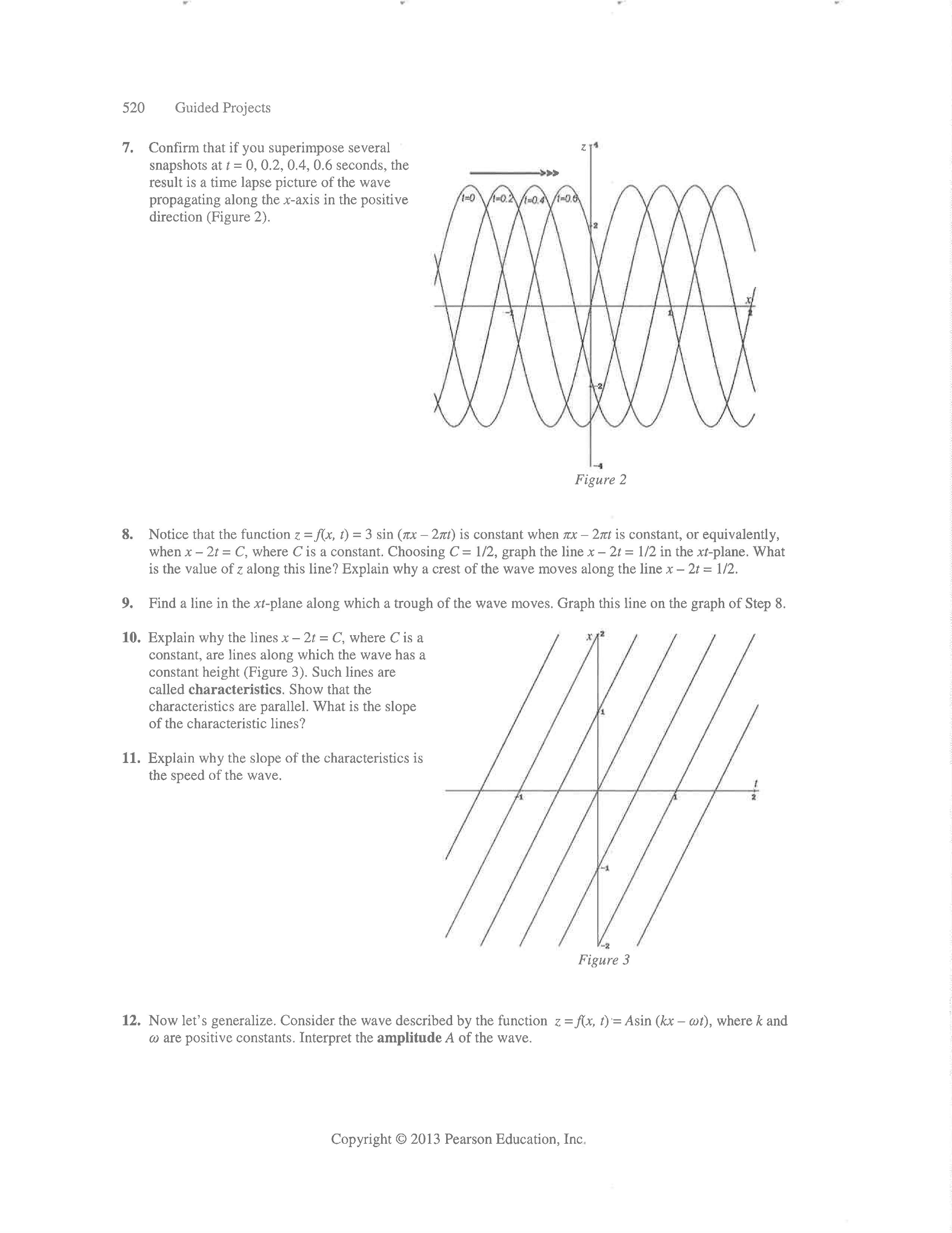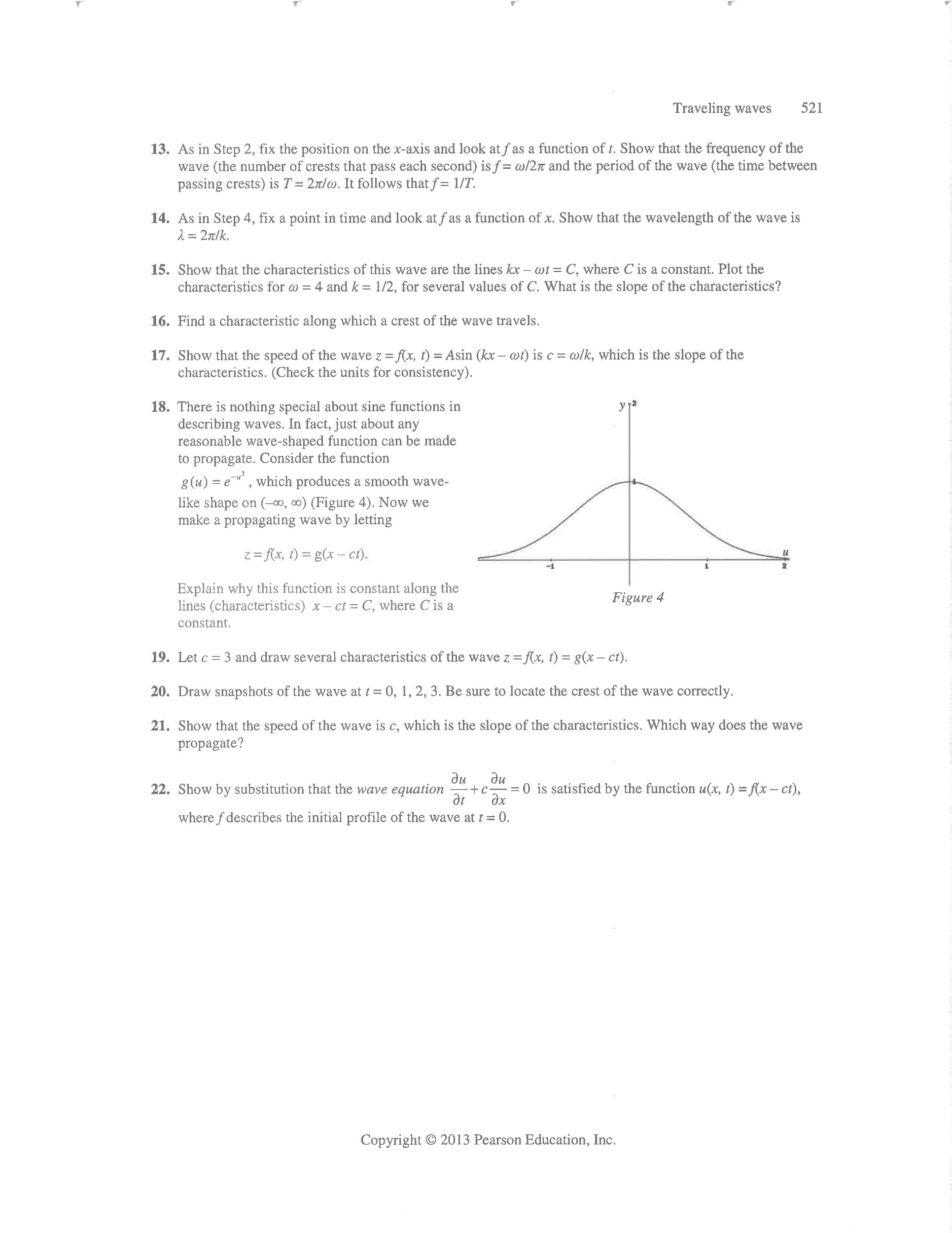MEDI 11002 Lecture Notes - Lecture 5: Waves, Elastic Scattering, Wave Power

WAVE PROPERTIES AND LIGHT
Types of waves:
1. Transverse waves – each particle vibrates in a direction perpendicular to that of
the energy flow
2. Longitudinal waves – the particles vibrate along straight lines parallel to the
direction of energy flow
Wave properties
- All waves involve energy being transferred from one location to another, without
the net transfer of matter
- Periodic waves are characterised by several features:
o Frequency - frequency of a wave is defined as the number of waves or
cycles that pass a given point per second
o Period – period of a wave is the time taken for one cycle to be completed;
it is measured in seconds.
o Wavelength – the wavelength is defined as the minimum distance
between two points in a wave that are in phase; or it can be defined as the
distance the wave travels during one period
o Amplitude – the value of the maximum displacement of the particle from
its mean position
- The velocity equation states that:
- Sound is a longitudinal wave. Vibrations occur in the same direction as the
direction of propagation of the wave
o They are made up of a periodic series of compressions and rarefactions
representing changes in pressure within the medium
o A compression is a region of higher than average air pressure; a
rarefaction is a region of lower that average air pressure
o Transverse waves are produced by particles which vibrate at right angles
to the direction of travel of the wave.
Wave behaviour
- Reflecting sound waves obey the law of reflection
o i.e angle of incidence i = angle of reflection r
- Sounds can be focused by a concave surface or spread by a convex surface
o Simple ray tracing can determine the path the waves will follow
find more resources at oneclass.com
find more resources at oneclass.com

- Refraction refers to the change in direction of a wave when sounds move from
one medium to another and changes its speed of propagation
o Frequency remains unchanged when sound moves to a new medium; its
speed and wavelength may change
o When sound moves into a medium which speed is greater, its direction of
propagation bends away from the normal. When sound moves to a
medium in which its speed is lower, its pathway bends towards the
normal
o The relationship between incident angle, refracted angle, the speeds in
the media and the wavelengths is given by Snell’s law:
A law stating that the ratio of the sines of the angles of
incidence and refraction of a wave are constant when it passes
between two given media.
- If the angle of incidence is greater than the critical angle for sound moving into a
medium where its velocity is greater than the sound will automatically be
reflected and will not enter the new medium.
- Diffraction is the bending of waves around the edge of a barrier or aperture. The
fact that sound diffracts provides further evidence that sound is a wave-like
nature
- The amount of diffraction depends on the ratio of the wavelength of the sound to
the width of the opening or obstacle.
o Significant diffraction occurs when the wavelength is at least the same
order of magnitude as the width of the opening
find more resources at oneclass.com
find more resources at oneclass.com

o High frequency sound waves have shorter wavelengths. As a result they
will diffract less than lower frequency sounds, which have longer
wavelengths and they will be more directional.
Wave interactions
- The principle of superposition tells us that when two or more waves interact, the
resultant displacement or pressure at each point along the wave will be the
vector sum of the displacements or pressures of the component waves
- Resonance occurs when the frequency of a forcing vibration equals the natural
frequency of the objects
a. The amplitude of the vibration increases
b. The maximum possible energy from the source is transferred to the
resonating object
Standing waves in a tube closed at one end
find more resources at oneclass.com
find more resources at oneclass.com
Document Summary
Types of waves: transverse waves each particle vibrates in a direction perpendicular to that of, longitudinal waves the particles vibrate along straight lines parallel to the direction of energy flow the energy flow. All waves involve energy being transferred from one location to another, without the net transfer of matter. Reflecting sound waves obey the law of reflection i. e angle of incidence i = angle of reflection r. Sounds can be focused by a concave surface or spread by a convex surface: simple ray tracing can determine the path the waves will follow. If the angle of incidence is greater than the critical angle for sound moving into a medium where its velocity is greater than the sound will automatically be reflected and will not enter the new medium. Diffraction is the bending of waves around the edge of a barrier or aperture. The fact that sound diffracts provides further evidence that sound is a wave-like nature.




